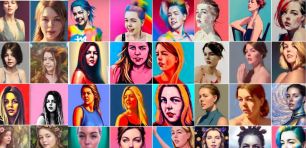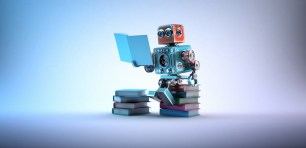
After exploding into the public consciousness at the end of 2021, AI tools like ChatGPT and Lensa have been flooding the news feeds and generating conversation around ethics, job security and potential uses. Some have also made proactive moves to prevent their work from being used to train AI, including artists and even the Australian satirical publication The Chaser.
There has also been discussion around business cases for AI, which leads to questions about copyright and whether company assets created with AI can be protected by copyright and trademarks.
ChatGPT and other AI tools may be going mainstream
While it may have seemed like ChatGPT would be a flash in the late 2022 pan, the tool is being increasingly taken seriously. Last week it was rumoured that OpenAI, the company behind ChatGPT, was engaging in a fresh funding round with a valuation of US$29 billion ($42 billion).
Fast-forward to this week and legacy tech giant Microsoft has entered the conversation. Not only is the company apparently looking to weave ChatGPT it its suite of Office products, but it’s apparently in investment discussions with OpenAI to the tune of US$10 billion ($14 billion).
Moves like this have kicked the conversation down the road. Rather than blanket fear that AI tools are going to replace some jobs, there are discussions about how these tools will be integrated into businesses and workflows to streamline processes.
Over on social media, content creators are sharing tips on how AI tools can be used to not only create art but entire businesses. This has converged particularly with the side of TikTok that is dedicated to promoting side hustles for individuals like affiliate marketing, drop shipping, print on demand and course and ebook creation.
Now there are a plethora of videos dedicated to AI tools that won’t just write for you, but also create music, videos, social and ad copy and even logos and branding. All of this is positioned as shortcuts for starting your own business and generating income “easily” from your laptop.
And this is where it gets messy.
Copyright law is murky when it comes to AI creations
Back in November, the US Copyright Office revoked a decision to grant copyright to a comic book titled Zarya of the Dawn. The comic was created by Kris Kashtanova using the image-to-text AI engine Midjourney. Despite initially granting the copyright, the decision was altered on the grounds that only works with human authorship can be protected.
Here in Australia artists and writers don’t have to apply for copyright protection. That being said, as we discovered with the Lensa app, copyright law doesn’t protect against artists’ works being used to train and create digital art.
“The moment an idea or creative concept is documented on paper or electronically it is automatically protected by copyright in Australia. Copyright protection is free and automatic under the Copyright Act 1968,” the business.gov website states.
But the same can’t be said for works created with AI. Australia is yet to update its Copyright Act to protect computer-generated works. Law firm Stephens and Layers and Consultants points this out in an article on the subject and discusses several cases where this has been argued, with one even dating back to the 1990s.
Similarly, AI-created inventions are also not protected under Australian patent laws.
And this could prove important for businesses that choose to rely on AI to generate writing, assets, branding and other collateral. There are no guarantees that any of it will be protected under Australian copyright law.
Of course, there is the simple argument of ‘how would anyone know?’ if there is no obligation to disclose. And perhaps that’s fair. Early adopters in particular may be able to get away with using a whole suite of AI programs to create logos, branding, copy and more without anyone being the wiser.
While the likes of OpenAI have floated the idea of digital watermarks on AI-created work, that’s just one platform and it’s unlikely to be visible to the naked eye.
But problems may arise if someone else starts using a company’s assets that were created with AI. It’s entirely possible that their origins could come out in legal proceedings and the business could potentially not have a leg to stand on if significant human creation elements could be proven.
Of course, this is all speculation. As always, technology is years ahead of the law, and that leaves us with more questions than hard answers. At least until we have some legal precedents to work from.
But if you are an individual or business that is relying heavily on AI tools to not just streamline processes, but to create visible or readable content, it’s worth knowing that cutting corners may come at a price down the road. It’s always pertinent to be aware of your legal protections, or lack thereof.
Handpicked for you

“It’s just a vehicle for profit”: Australian artists paint a dark portrait of Lensa



COMMENTS
SmartCompany is committed to hosting lively discussions. Help us keep the conversation useful, interesting and welcoming. We aim to publish comments quickly in the interest of promoting robust conversation, but we’re a small team and we deploy filters to protect against legal risk. Occasionally your comment may be held up while it is being reviewed, but we’re working as fast as we can to keep the conversation rolling.
The SmartCompany comment section is members-only content. Please subscribe to leave a comment.
The SmartCompany comment section is members-only content. Please login to leave a comment.